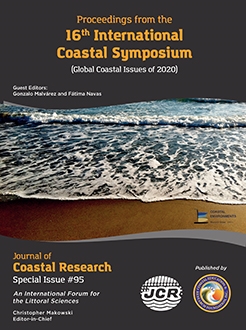Shim, J.S.; Kim, J.H.; Chang, B.S.; Min, I.K.; Choi, J., and Chun, I., 2020. Wave observation methods using high-frequency ocean radar. In: Malvárez, G. and Navas, F. (eds.), Global Coastal Issues of 2020. Journal of Coastal Research, Special Issue No. 95, pp. 1273–1278. Coconut Creek (Florida), ISSN 0749-0208.
The Korea Institute of Ocean Science and Technology (KIOST) has been developing high-frequency (HF) ocean radar for wave observation with SETsystem Inc., which had developed HF ocean radar for ocean currents. A Bayesian directional spectrum estimation method (BDM) algorithm was developed to extract wave information from HF ocean radar and tested using surface current and wave variability experiments (SCAWVEX) data. A circular array antenna was used, which has advantages in terms of smaller installation space and narrower beamwidth. The prototype of the HF ocean radar for wave was composed of BDM algorithm and circular array antenna for optimizing the observed waves. The prototype of the HF ocean radar was installed at the East Sea Research Institute, Uljin, in the Republic of Korea (ROK). The radar system is being checked, and a future study will compare the results with those of other observation tools.





